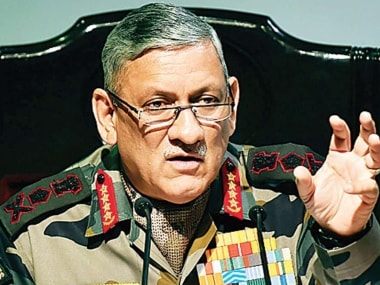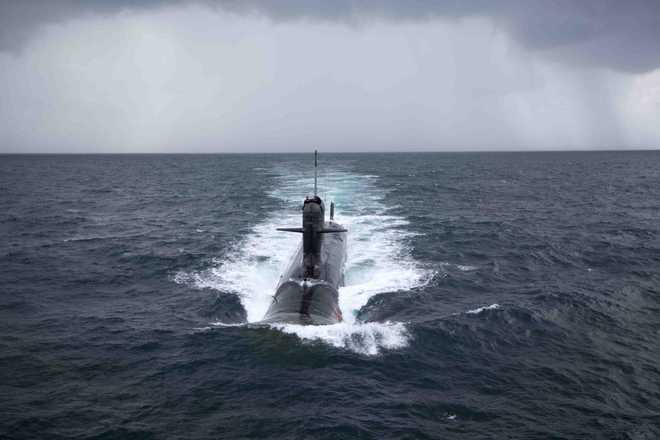
General Bipin Rawat, the Chief of the Army Staff (COAS), is reported to have initiated four major studies for the transformation of the Indian army into a “more agile fighting force” to face current and emerging threats and challenges. Apparently, the endeavour would be to transform the present army into a force that can deter war while being simultaneously ready to fight and win on future battlefields. All armed forces conduct such exercises periodically to evaluate the efficacy of their force structures, the effectiveness of their weapons systems and equipment and the adequacy of their logistics support chains and infrastructure for future wars.
The overall aim of transformation should be to enhance combat effectiveness by an order of magnitude. Recommendations for the future force should be made in the light of likely changes in the strategic environment, new developments in weapons technologies and ancillary defence equipment and the budgetary support likely to be provided by the government. The restructuring being undertaken by the nation’s military adversaries would also influence the recommendations that are eventually presented to the government by Army HQ.
Besides changes in the strategic environment, it must be noted that the character of conflict is constantly changing and evolving. From state versus state conventional conflict — mainly for territorial gains — the pendulum is gradually swinging towards sub-conventional conflict between states and disaffected non-State actors. In the prevailing era of strategic uncertainty, future threats and challenges are becoming increasingly more difficult to predict. Blurring the distinction between the states of war and peace, non-military means are being increasingly employed to achieve political and strategic goals in the “hybrid” conflicts of the 21st century.
Consequently, the force transformation trend line among modern armies is to move from threat-based forces that were designed to meet known threats to capability-based forces that provide a set of capabilities to deal with a range of unexpected situations. The combat capabilities that these forces must develop are carefully defined. Similarly, training regimes are being reconfigured to train officers and other ranks for certainty and to educate them to face uncertainty.
In India’s case, the unresolved territorial disputes with China and Pakistan are likely to remain the primary source of future conflict. Given the collusion between China and Pakistan in the nuclear warhead, ballistic missile and military hardware fields and their “all-weather” strategic partnership, India has to remain prepared to fight a two-front war. Deterrence can only be achieved by developing the capability to launch offensive operations deep into the adversary’s territory. As India’s territorial disputes are mainly in the high Himalayan mountains where deep manoeuvre is not possible, the army must upgrade its firepower capabilities very substantially if the stipulated military aims are to be achieved. Similarly, the ability to launch vertical envelopment operations will be a major asset in the mountains.
India’s increasing responsibilities as a net provider of security in the Indo-Pacific region will require the creation of tri-Service capabilities for military intervention singly or in conjunction with its strategic partners. While India would prefer that such interventions be launched under the United Nations flag, it is likely to join a coalition of the willing if its vital national interests are threatened and the UN Security Council fails to reach a consensus on the need to intervene.
Advanced armies such as those of the United Stated and its allies have graduated to launching “effects-based” operations in a “networked-centric” battlefield environment. These capabilities are highly capital intensive as they are based on secure, state-of-the-art command and control systems with adequate redundancy, accurate ground, air and space-based reconnaissance, surveillance and target acquisition (RSTA) systems and failsafe precision guided strike munitions. In view of perennial budgetary constraints, the Indian army will need to carefully assess as to which of the field formations must be armed with these sophisticated force multiplier capabilities; for example, the Strike Corps which are designed to launch offensive operations.
The army’s manpower-intensive deployment on the northern borders can be reduced to a large extent by employing modern RSTA resources backed by readily available reserves. New vulnerabilities are appearing on the horizon with alarming regularity. Cyber security is posing a huge challenge and nation States are finding it difficult to cope with the increasingly sophisticated hacking techniques being employed by State and non-State actors and rogue individuals. This is one field in which India’s famed expertise in developing software can be exploited to advantage.
“Non-contact” warfare techniques are gaining currency. For example, measures designed to harm a country’s economic stability — such as the circulation of fake currency — are adding to the challenges to be overcome by security planners. While decades-old insurgencies in the north-eastern states are gradually coming under control, the emergence of new internal security challenges like being called upon to deal with left wing extremism (Maoist terrorism) cannot be ruled out. Hence, the army must continually sharpen its counter-insurgency skills and capabilities.
The process of transformation must also review the suitability of military doctrines such as Cold Start and the usefulness of present organisational structures during future wars so as to enable the Army HQ to make appropriate changes. The army’s human resources development (HRD) policies, particularly the adequacy of current training regimes, must also be re-evaluated. The likely impact of emerging technologies such as artificial intelligence (AI), killer robots, unmanned or autonomous combat vehicles and the opportunities provided by the exploitation of “big data” must be diligently studied.
The process of transformation for future wars has only just begun with the convening of four study groups by the COAS. It must be an evolutionary process with course corrections being made periodically as experience is gained during the implementation stage. To succeed, the transformation process must have the full support of the political leadership and the bureaucracy.


















































































































